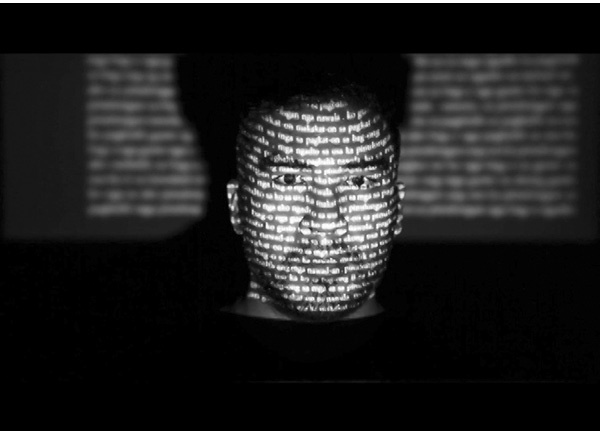
SOUNDING LEGACIES
first performed on October 16, 2013
University of Illinois at Chicago, Chicago, IL
performed once in 2013
ALEJANDRO T. ACIERTO
Chicago, IL / Brooklyn, NY
024444493i024444493n024444493f024444493o024444493@024444493a024444493l024444493e024444493j024444493a024444493n024444493d024444493r024444493o024444493a024444493c024444493i024444493e024444493r024444493t024444493o024444493.024444493n024444493e024444493t
alejandroacierto.net
SOUNDING LEGACIES
ALEJANDRO T. ACIERTO
As part of my recent vocal performance work that instantiates moments of “analog glitch,” “Sounding Legacies” is an intermedial performance work that utilizes sonic and rhetorical methods to think about mixed race bodies, representations and notions of (racial) perception. Within these bodies of work, the voice becomes the medium that foregrounds multiple ways mixed race subjects negotiate language, speech, culture and identification. Through an intentional “glitched” performance that collides sonic gestures and multiple modalities of vocalizations, mixed race subjects become caught in their own abilities to speak due to the multiple ways they must negotiate the performances of their own voice. As such, these works investigate how the voice, as a site of the body, navigates through multiple spaces of identification simultaneously.
Hinged on the assumption that language is the immediate signifier for “culture,” this work is interested in how mixed race bodies complicate those conceptions through the expectation of performing multiple languages simultaneously. In efforts to perform “authentically,” mixed race subjects are often called into question when they are unable to speak their ancestral languages. Staging the moment of learning language, “Sounding Legacies” materializes instances of vocal collision within the implausible task of replicating two languages at once. Within the attempts to replicate an overabundance of sonic material in real time, my ability to speak adequately is hindered due to the high level of cognitive dissonance or noise created by the other channel.
Situated within a darkened gallery, this work was part installation, part performance. I sat on the stool, placed headphones on my head and sat silently while the sounds of my own voice sounding other languages emanated from the gallery. The text “I want to learn a new language to reclaim the ones I’ve lost” shimmers prominently to the left of the performance area, establishing the framework from which the work is built. After some time, I began to replicate these sounds through speech. While calculating every syllable in an attempt to speak two languages, the resulting performance was that of a body tripping and stuttering over words, sounds and utterances. I positioned my body into a struggle for and with language, like an infant learning and unable to coherently articulate anything. And while the resultant sounds forged the possibility of a new language (a creolization?) through the process of repetition, the sheer violence of the act itself hindered this possibility altogether.